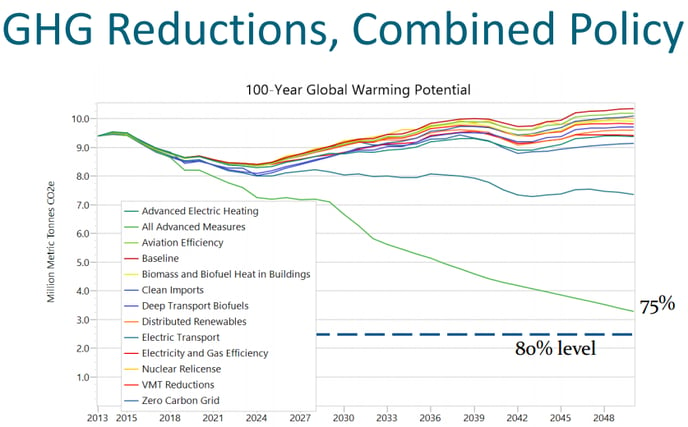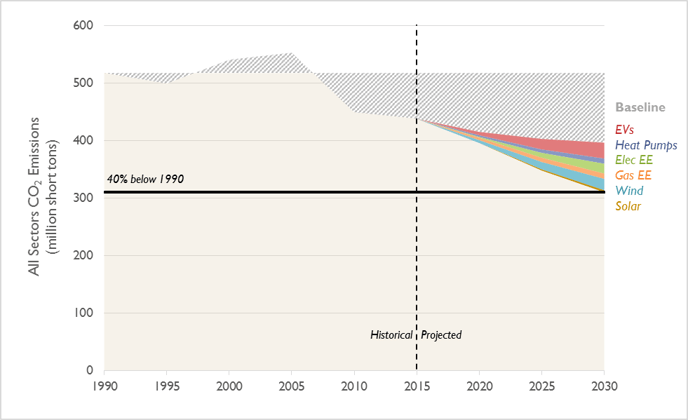The Resilient Rhode Island Act mandates that Rhode Island take active steps to mitigate and reduce the impacts of climate change. The Act passed in 2014 with widespread support from the environmental and clean energy communities, including People’s Power & Light.
Under the act, the state has set goals to reduce heat-trapping greenhouse gas emissions (GHG) to 10% below 1990 levels in 2020, 45% by 2035, and ultimately reaching 80% emissions reductions by 2050.
In order to ensure these goals are met, former Governor Chafee issued an executive order formally creating the Executive Climate Change Coordinating Council (EC4). The EC4’s members are leaders of major state agencies. It also includes a separate Advisory Committee and Technical Committee consisting of local experts and key stakeholders to inform the Council.
Is It Working?
The EC4 hired expert consultants to prepare a Greenhouse Gas Emissions Reduction Study. The consultants analyzed Rhode Island’s current energy technologies and opportunities to cut emissions. A preliminary study revealed some sobering truths: even moving almost entirely to renewable energy on the electric grid, replacing gas-powered cars with electric vehicles, AND improving heating efficiency in homes, Rhode Island will probably fail to reach its Resilient Rhode Island goal for 2050. The EC4 is required to submit a report to current Governor Raimondo by the close of this December with solutions to reach our emission reduction targets.

Source: RI GHG Emissions Reduction Study, slide 11.
Our View
We believe that while it’s essential to reduce GHG emissions 80% by 2050, we simply do not have the information we need in 2016 to chart the entire course from here to then. We are optimists that technologies will improve, markets will improve, and human behavior will change. Trying to predict details 34 years from now is not a fool’s errand, but it is premature to make solid projections on emissions given the pace of things in the energy world. Therefore, we are advocating that Rhode Island take strong, tangible, verifiable steps from now through 2030 that get us to at least a 40% GHG reduction (again below 1990 levels). This puts current policymakers, industries, and consumers all on the spot. Kicking this can down the road is not acceptable. The more we do now, the more cost-effective options we will have later.
To us, a valuable resource is a March 2016 study by Synapse Energy Economics. Synapse evaluated the most cost-effective approaches for Northeastern and mid-Atlantic states to meet their 2030 climate goals. In addition to using electric-sector energy efficiency and renewables, this least-cost strategy achieves deep emission reductions by implementing new policies in the transportation, residential, commercial, and industrial sectors. This study was summarized as a guest blog, so we will be brief here. What it shows is that we need, in addition to more renewable energy, much more efficiency and the widespread adoption of electric vehicles between now and 2030.

It will take a combination of individual choices made daily together with big investments in our future. But we can get there and PP&L is committed to ensuring we do so as economically and sustainably as possible. In Rhode Island, as PP&L, we will be advocating for policies that get us where we need to be on time. Meanwhile, we hope that you already support renewable project development by greening your electricity. Then, encourage a friend to do the same or consider contributing to our New England Wind Fund.
And, stay connected to People’s Power & Light to keep apprised of progress made on the Resilient Rhode Island Act, including the work we are doing to ensure RI rises to the challenge of reducing greenhouse gas emissions.


Comments